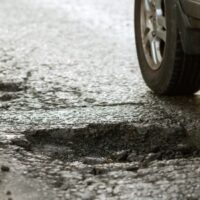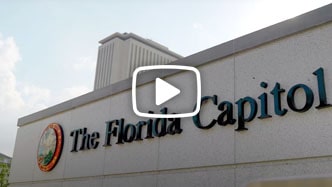What Kind of Road Conditions Can Cause Car Accidents?

Often, car accidents occur because of drivers making poor choices, such as driving while drunk, driving while distracted, speeding, and failing to yield. However, car accidents can sometimes occur because of a combination of driver negligence and poor road conditions. When a car accident occurs due to driver negligence and poor road conditions, the driver and the entity responsible for maintaining the road may share liability. In this article, we share some of the road conditions that can cause car accidents;
#1: Uneven Road Surfaces
Uneven road surfaces are a significant road condition that can cause car accidents. Potholes and cracks are prime examples of this. Various factors, including poor construction, inadequate maintenance, natural wear and tear, weather conditions, and heavy traffic can cause uneven road surfaces. Uneven road surfaces can cause vehicles to lose control, making it difficult for drivers to navigate turns or change lanes smoothly, and affect braking performance.
#2: Debris on the Road
Debris on the road can come from various factors, including accidents, trucks or other vehicles transporting goods, construction sites, natural events, and littering. Unfortunately, debris on the road can increase the risk of car accidents. Debris can cause drivers to make sudden lane changes or maneuvers that increase the risk of accidents. Large debris can obstruct a motorist’s view of the road. Additionally, debris, such as oil spills, sand, or gravel, can reduce traction between tires and the road, resulting in skidding or loss of control.
#3: Lane Marking Problems
Incorrect, inaccurate, or faded lane markings can pose various dangers to motorists. For example, lane marking problems can cause confusion and uncertainty among drivers, resulting in lane drifting and improper lane changes. Lane marking problems can lead to drivers failing to yield the right of way when required. Also, missing or faded lane markings can result in drivers improperly passing other drivers. Improper passing increases the risk of accidents.
#4: Poor Signage
Proper signage is crucial for guiding drivers safely along the road. Missing, faded, or obscured signage can present significant dangers to drivers and other road users. It can cause confusion, which can result in potentially risky situations. For example, a driver may make an incorrect turn or miss a stop or yield sign. Signage is also important for warning drivers about hazards such as animal crossings, sharp curves, or pedestrian crossings. When such signs are missing, faded, or obscured, motorists may be unaware of these hazards, increasing the risk of accidents.
#5: Poor Lighting
Driving at night is already challenging on its own. When you add inadequate lighting to the equation, the situation gets even more challenging. Dimly lit roads make it harder for drivers to see at night. Poor lighting can result in a driver not noticing an obstacle, pedestrians, or other road users, increasing the risk of an accident.
#6: Obstructions
Obstructions such as overgrown vegetation and roadside structures can block visibility, making it challenging to see oncoming vehicles, pedestrians, motorcyclists, cyclists, or potential hazards. Reduced visibility increases the chance of accidents.
Legal Help Is Available
Car accident cases involving poor road conditions can be complex. Our Fort Lauderdale personal injury attorneys at The Pendas Law Firm can help you determine which entity is to blame for your accident. We can help you hold the entity liable and fight for the compensation you deserve.
The Pendas Law Firm also represents clients in the Orlando, West Palm Beach, Ocala, Daytona Beach, Fort Myers, Miami, Tampa, Jacksonville, Bradenton, Naples, and Melbourne areas.






